Big Tank
Much has changed since the first post, the most noticeable is going from a 40g display to a 138g display.
Increase in tank volume
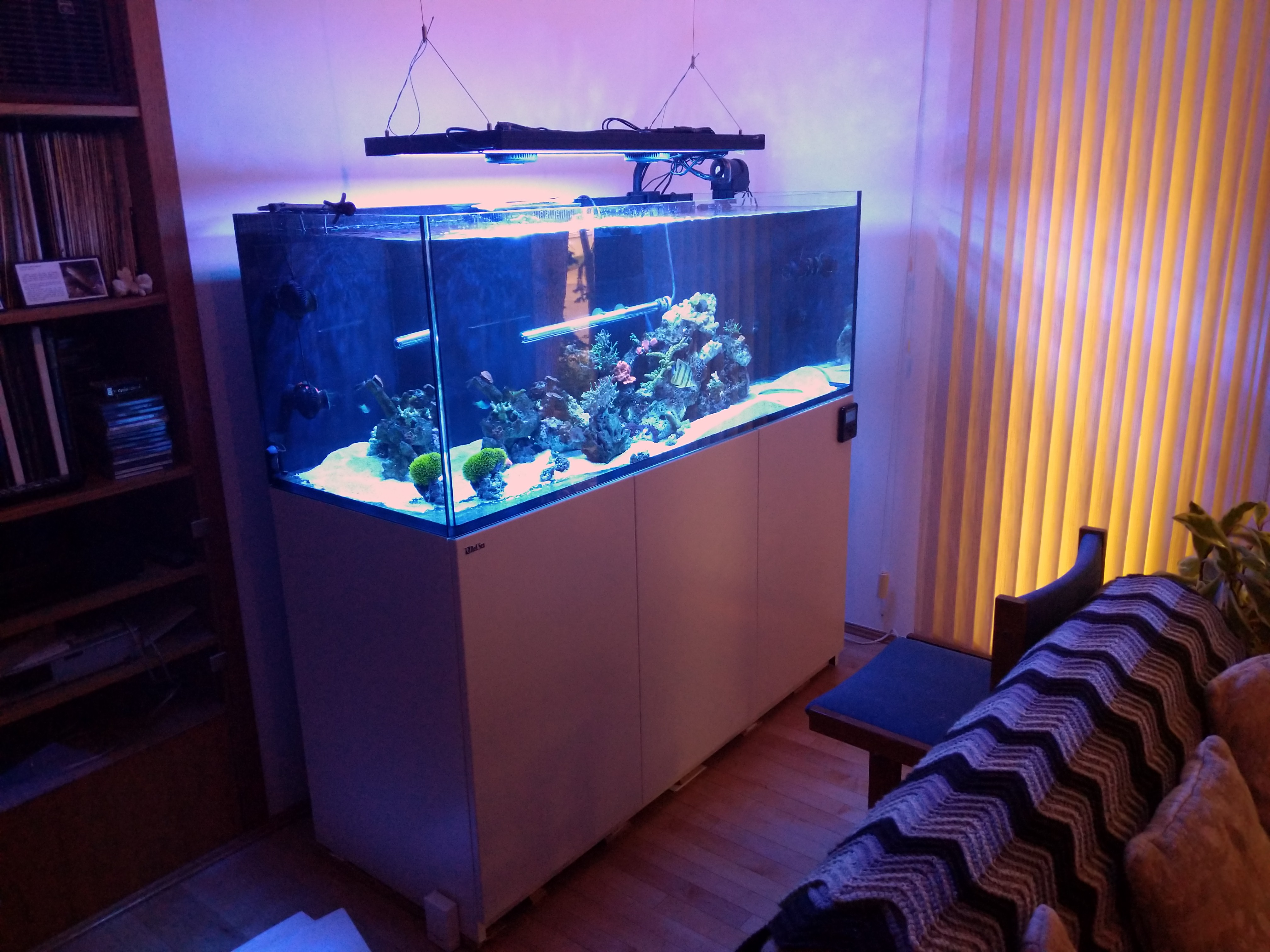
I was riding a knife edge with the 40 gallon tank and the increase in water volume allows for a buffer, slowing down the impact of problems. Temperatures fluctuate less now and swings from feeding are more gradual.
Grow algae under the tank, not in it
I had been battling algae on-and-off over the coures of a year. The coral grow slowly but need a lot of food in the water column and algae eats up these excess nutrients. I was able to finally mitigate this by introducing a refugium.
Long, black algae would come & go and each time I’d fight it off with Algae-X, which would in turn lead to a bloom of cyano. Killing the cyano off leeched toxins in the tank which always led to the bleaching of a coral colony or two. It was a losing battle until I added a refugium.
At first I used a 14W Finnex planted aquarium light over 6” x 12” of sump area, growing chaeto. The black algae disappeared completely in only a few weeks, with no harm to the corals. The move to the new tank justified a big, strong light to out-compete the main lights in the tank.
I added a high powered 100W grow light, meant for cannabis, which has a name brand CREE LED, Meanwell power supply, and dimmer knob.
This thing is very powerful. An informative discussion on reef2reef led me to crank up the light to 600 PAR where the chaeto sits and almost 1200 PAR at the surface. If it grows in 2000 PAR under Texan sun then it should grow well at 1200 PAR in my sump.
I tested it with a Seneye and at about 75% output the light makes 1262 PAR at the water surface, 8” off the water. It measured about 1300 kelvin for colour temp and has a nice mix of blue & red spectrum, great for growing chaeto.
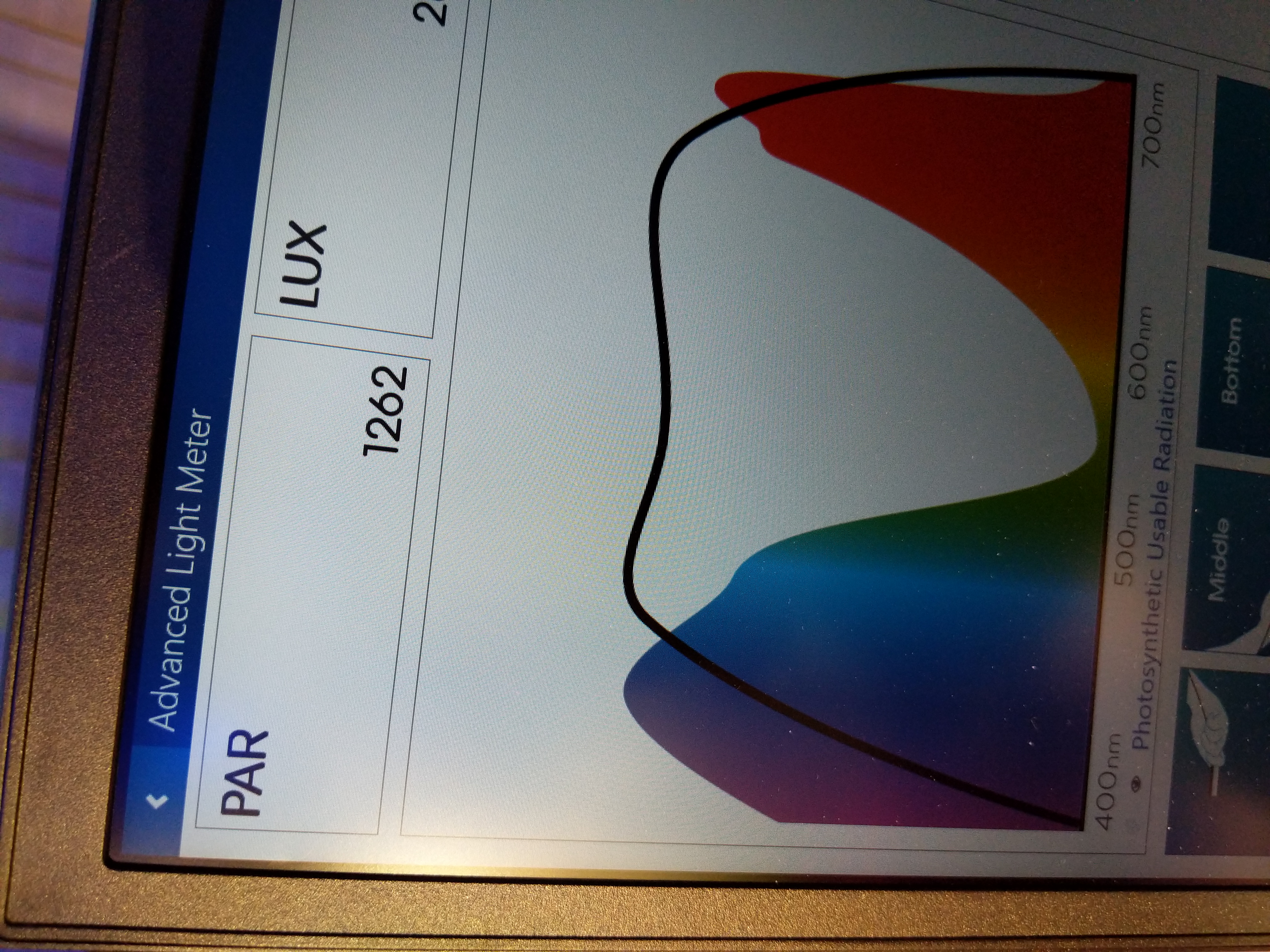
Skim like mad
Over the course of the year I had difficulty getting consistent performance from the Bubble Magus Curve 5 skimmer I was preivously using. Micro bubbles would escape, causing a haze in the aquarium and lowering light and visibility. The slightest amount of chemical introduced would cuase it to overflow, one time resulting in a small tank crash. The tank upgrade sparked a skimmer upgrade and I decided to not skimp out on such an essential item. I went with a Red Sea 300 Skimmer.
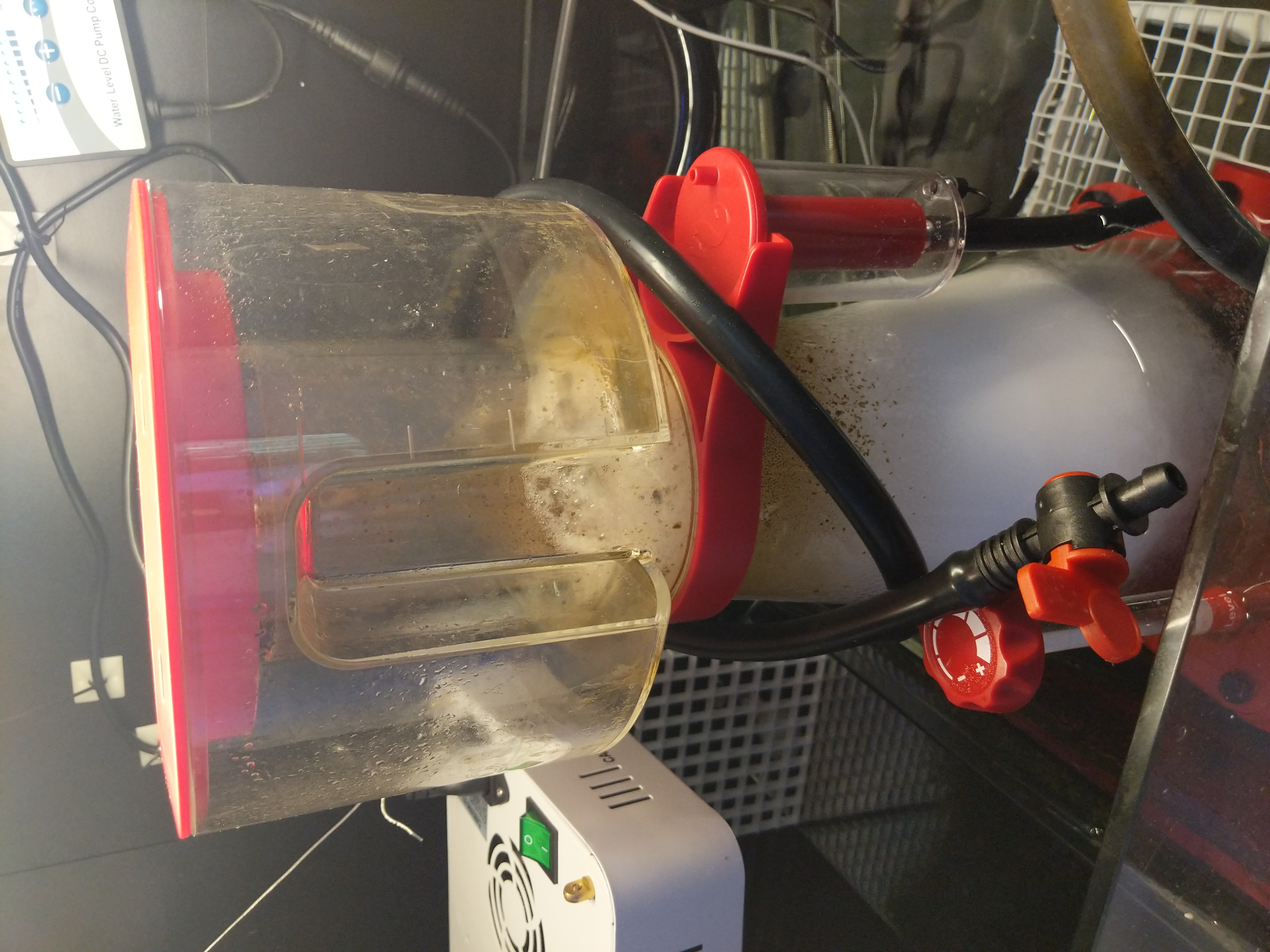
It’s already been nice and consistent, due to the higher quality skimmer design coupled with the larger water volume. It required about 4” of lift off the bottom of the sump for the optimal water height, marked right on the skimmer. Having the marking on the skimmer led to less guess work and a quick setup. The neck has cleaning squeegees built in so cleaning the neck daily isn’t a chore.
In the past, I my salinity would slowly creep downwards because I’d remove skimmate but not replenish the saltwater. The red sea skimmer has volume measurements on the collection cup so when I empty 1L of skimmate I simply need to add 1L of saltwater. It’ll go a long way to keeping things stable and fewer manual corrections.
Meet Wall-E, our new copperband butterfly

With the increased water volume, increased space, and a plethora of Aiptasia anemones in the tank, it felt possible to keep a copperband butterfly. The following were the criteria set out to successfully keep this beautiful fish:
- Must be eating food at fish store
- Must be eating food that’s easy to get and somewhat nutritious. This rules out brine shrimp but mysis is an OK starting point.
- Must be able to feed the fish 3x per day
90% of our husbandry work so far has been related to food. Thankfully, he was readily eating mysids at the store, and he’s eating them just as regularly at home. We’ve made a seafood meddly, tossing various frozen sea foods in the food process, such as clam, squid, and shrimp. He hasn’t taken this food up as readily, only eating a single piece a day but it’s better than nothing.
It’s going to take time to get Wall-E to adjust to target feeding using a brine shrimp net so for now we have to introduce a small flurry of food into the tank 3x per day. The increased skimmer capacity and high powered refugium has been keeping the nitrates from climbing.
Scoot, our new dragonette
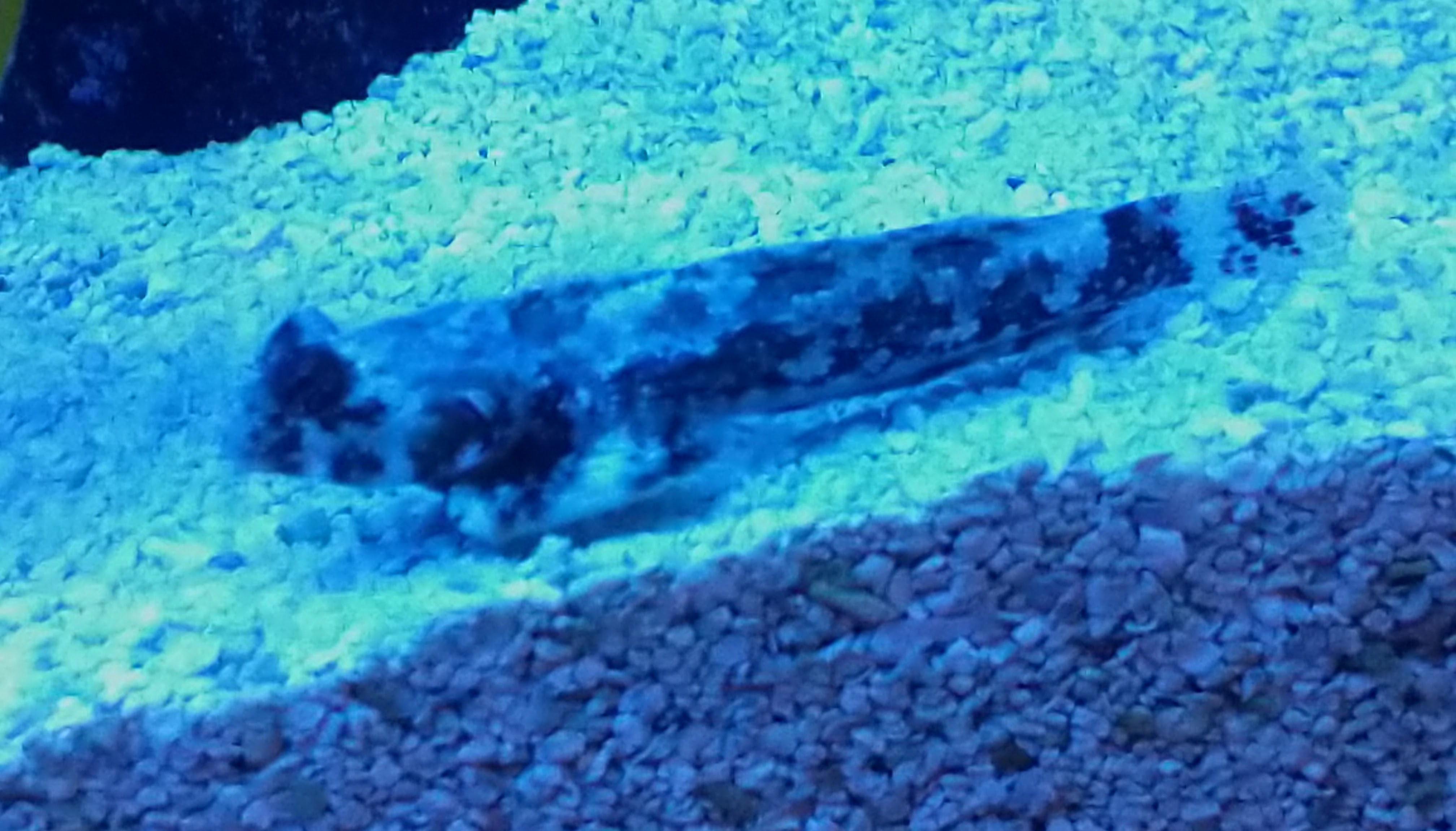
We introduced another difficult feeder (more so than the copperband), a scooter blenny, who’s a member of the dragonettes. He’s afraid of turkey basters, afraid of nets, and has a hard time finding his way to the makeshift feeding station we’ve been using.
When we feed the whole tank he picks up a few pieces of mysids but not enough for long-term sustenance. Our latest strategy has been placing frozen brine in a mason jar, set on it’s side on the bottom of the substrate. He doesn’t seem to smell the food and wanders the tank without going for the jar. We’re going to try a smaller mouthed jar next, placed closer to the rock work near the section of the tank he’s usually hanging out.
New salt mix: D-D H2Ocean Pro Formula
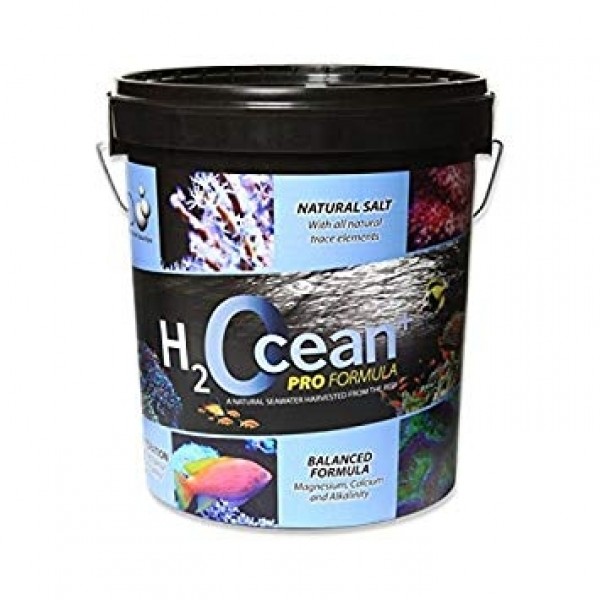
Adding calcium and alkalinity to salt mix every time a water change is being done is time consuming and leads to fewer water changes. I switched D-D H2Ocean Pro salt mix, which is higher in alkalinity and calcium leading to faster water changes. The salt is almost pelletized and burns to the touch because it’s labelled as “low moisture content.” This means it’s anhydrous: the moisture’s been driven out. This leads to less precipitation when mixing the salt, despite the high alkalinity, prevents the various salts from interacting with each other in the bucket, and lowers the shipping weight.
It mixes extremely fast, in under 30 minutes in 60F water. It hasn’t precipitated anything when heating and mixing it simultaneously, and it stabilizes to a pH of 8.3 within 30 minutes.
Changes coming
More live rock
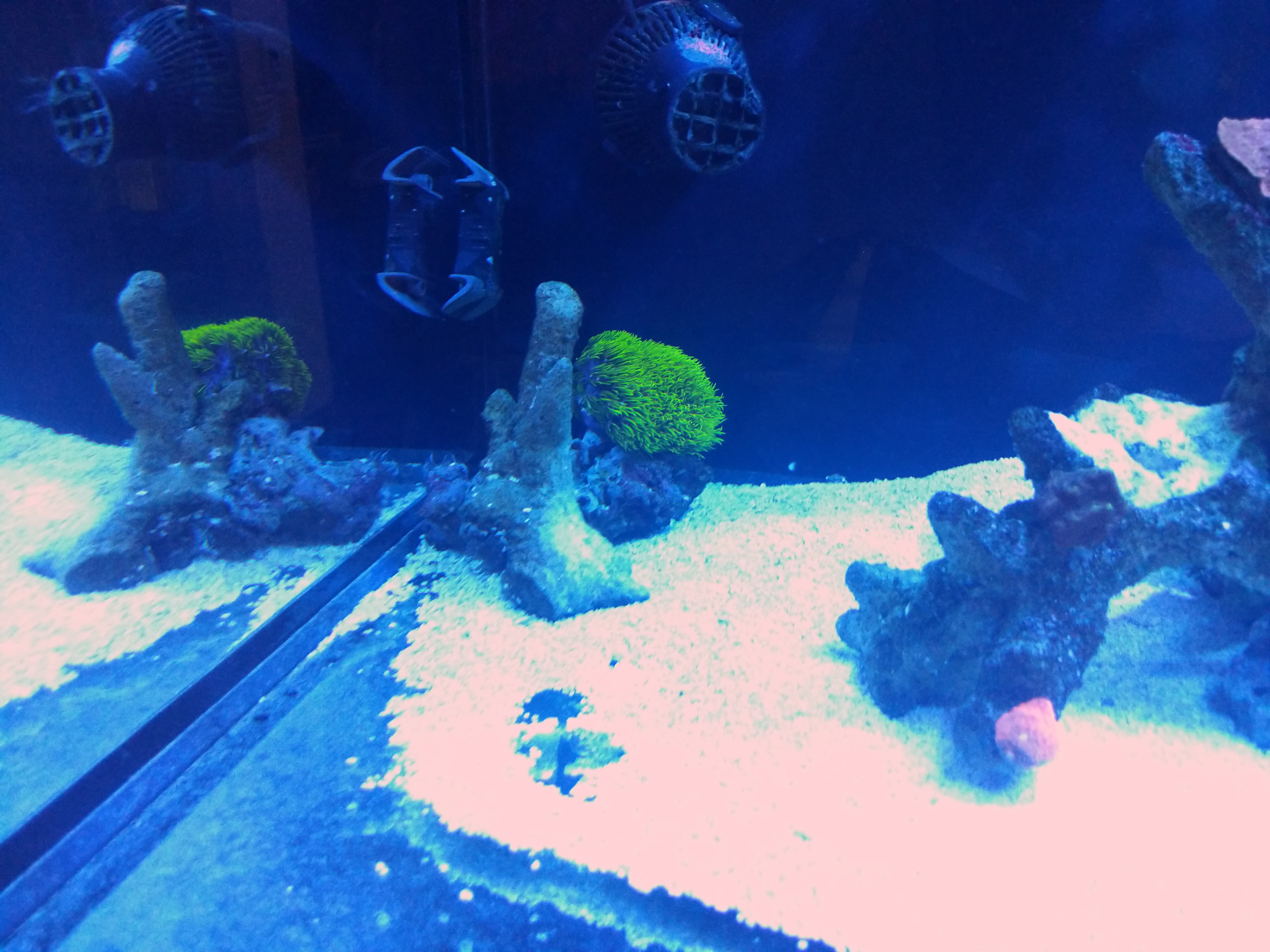
We plan on adding more live rock, to harbour more copepods for the fish and coral to eat. Due to covid, stores haven’t had shipments lately so we’re looking for some from a local hobbyist if it’s available.
Wall-E gets pretty bored in the tank and simply turning rocks over to expose new undersides for him to explore keeps him busy. Adding more rock will help with his mental health, preventing depressed behaviour, such as rubbing against the glass or nervous twitches. It’s surprising how intelligent and emotional this fish is. More live rock will make it possible to block off the sides of the tank with obstructions so that he doesn’t fight his own reflection. He kicked the daylights out of himself last night, banging against the side of the tank hard. We moved some small pieces of rock and the algae scraper to where he was watching himself but larger rocks will be a better solution.
Lighting the sides
The 40g breeder was upgraded to a 36” T5HO/LED light fixture, running four flourescent bulbs with two Kessil A360X high powered LED lights. Thankfully, the LEDs combined with the flourescents still produce 200-300 PAR throughout the tank but it falls off at the limits of the 3 foot fixture. We’ll be watching the used listings for another Kessil light, to mount in the center, then the existing two can be spread further apart, providing better coverage of the sides.